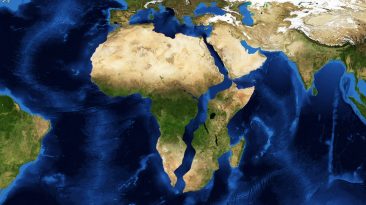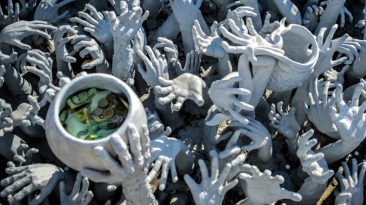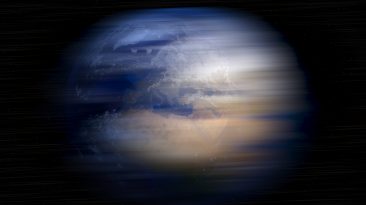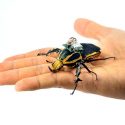In today’s interconnected world, we’re constantly barraged by conflicting information on what we should and shouldn’t be eating.
But if there’s one thing that we can all agree should definitely not be a part of our diets, it’s nuclear waste.
In the movies, ingesting radioactive materials like uranium results in all sorts of crazy hijinx, like obtaining superpowers!
But what would happen if you ate it in real life? How would it change your body? And how do we know that we’re not eating it already?
Uranium is a naturally radioactive material that was one of the main elements used to make the nuclear bombs of World War 2.
But you don’t have to be a mad scientist to be exposed to it. The Environmental Protection Agency says that the average person eats between 0.07 to 1.1 micrograms of uranium per day.
How is it getting into our food? And how much can we eat before it starts to do damage?
I know what you’re thinking: “I wash and inspect every piece of food I put into my body, and I’ve never noticed any glowing green materials!”
Well it’s not that simple. For one thing, contrary to what pop culture tells you, uranium and most other radioactive materials do not actually glow!
And on top of that, the uranium that we eat isn’t being secretly sprinkled on top of our food by some covert organization, so you can remove your tinfoil hats for now. Instead, the uranium that we eat is coming from within our food, and it’s getting there naturally.
[dx_custom_adunit desktop_id=”RTK_CDE4″ mobile_id=”RTK_SUFd”]
Uranium occurs naturally in soil, rock, and water; and it can be released into the air through wind and water erosion, and volcanic eruptions. In the air, uranium exists as dust that falls onto plants and land, especially during heavy rainfalls.
Once on land the uranium seeps into the soil and sticks to plant roots, making root vegetables like potatoes, radishes, and turnips its primary means of getting into our diets. But don’t worry, the amount of uranium we ingest on a daily basis is not nearly enough to do any damage.
Luckily for us, almost 99 percent of the uranium that enters our body through food also makes a quick exit through our feces. And 70 percent of the remaining uranium that doesn’t go through the back door just leaves a bit later through urination.
A tiny amount will stay within your bones for a few months, or even years after eating it, but won’t have the same toxic effects you’d experience if you inhaled it. Just because we all survive ingesting it every day, doesn’t mean we should be eating big chunks of it, and starting the “uranium challenge” online!
Eating large doses of uranium would be very dangerous; if you consumed 25 milligrams of it, you’d immediately start to experience kidney damage, and anywhere past 50 milligrams could cause complete kidney failure and even death.
If you did happen to survive those meals, you still wouldn’t be in the clear, because long term radiation exposure can lead to increased chances of cancer and changes in brain chemistry.
So yeah, if someone plops a big chunk of uranium on your plate, you’re probably best to pass, and tell them you’ve had your share for the day.
Subscribe to What-If on Youtube or follow the show on Facebook Watch.
Sources
- “What If You Ate Uranium?”. Garden, Home, Science Myth, and What If. 2015.Howstuffworks. Accessed January 19 2019.
- “ATSDR – Public Health Statement: Uranium”. 2019. atsdr.cdc.gov. Accessed January 19 2019.
- “Facts About Uranium”. Science, Live, and Planet Earth. 2017. Live Science. Accessed January 19 2019.
- “HEALTH EFFECTS”. Agency For Toxic Substances And Disease Registry (US).
- “Radiation Sources And Doses | US EPA”. 2015. US EPA. Accessed January 19 2019.
- “What Happens When Someone Touches Uranium?”. 2019. forbes.com. Accessed January 19 2019.



























